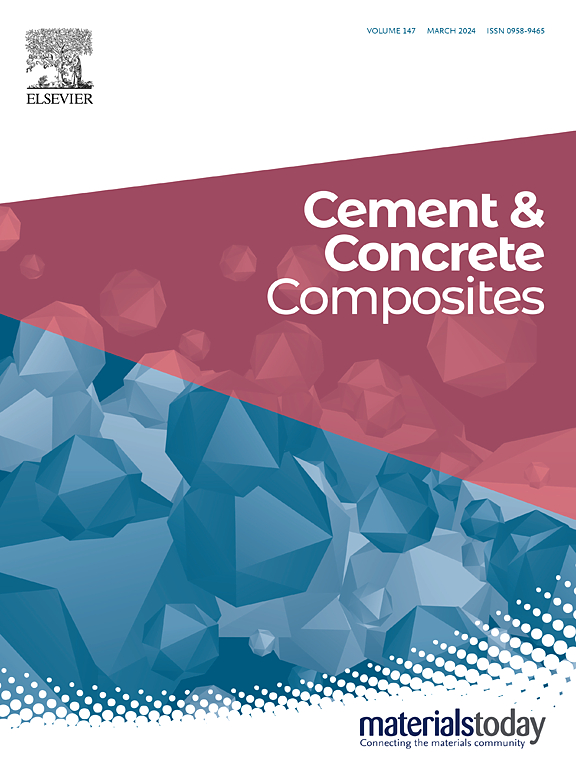考虑全级孔隙结构的3D打印混凝土强度多尺度表征
IF 13.1
1区 工程技术
Q1 CONSTRUCTION & BUILDING TECHNOLOGY
引用次数: 0
摘要
3D打印混凝土(3DPC)的宏观力学特性受到细丝和夹层孔隙界面的影响。在考虑全孔径表征的情况下,从微观、中观和宏观尺度上研究了孔径体积的变化规律。孔隙的引入影响了水合孔隙的分布密度和几何特征。通过微生物修复方法实现了硬化后引入和水化孔隙的主动调节,从而影响了凝胶孔隙、毛细血管和打印空隙的空间分布。结果表明:混凝土的各向异性抗压强度与20nm ~ 3mm尺寸范围内孔隙的分布和数量有关;基于Powers理论,建立并分析了三维pc的孔隙强度模型,模拟了空间分布对叠加界面的影响。此外,建立并评价了考虑孔隙形态和空间分布的三种混合比下的3DPC本构应力-应变关系。本文章由计算机程序翻译,如有差异,请以英文原文为准。
Multi-scale characterization of the 3D printed concrete strength considering the full grade pore structure
The macro-mechanical characteristics of 3D printed concrete (3DPC) are impacted by the porous interfaces from both filaments and interlayers. Under the consideration of a full pore size characterization, the variations on pore size-volume are investigated in the spatial distribution of the micro-, meso-, and macro-scales. The introduced pores affect the distribution density and geometric characteristics of hydrated pores. An active regulation of introduced and hydrated pores after hardening is achieved by microbial healing method, which affects the spatial distribution of the gel pores, capillaries and printed voids. The results indicate that the anisotropic compressive strength of concrete is correlated with distribution and number of pores in a size range between 20 nm and 3mm. A pore-strength model for 3DPC is developed and analyzed based on Powers theory, to simulate the effects of spatial distribution in stacked interfaces. In addition, the 3DPC constitutive stress-strain relationship with three mixing ratios considering the pore shapes and spatial distributions are established and evaluated.
求助全文
通过发布文献求助,成功后即可免费获取论文全文。
去求助
来源期刊

Cement & concrete composites
工程技术-材料科学:复合
CiteScore
18.70
自引率
11.40%
发文量
459
审稿时长
65 days
期刊介绍:
Cement & concrete composites focuses on advancements in cement-concrete composite technology and the production, use, and performance of cement-based construction materials. It covers a wide range of materials, including fiber-reinforced composites, polymer composites, ferrocement, and those incorporating special aggregates or waste materials. Major themes include microstructure, material properties, testing, durability, mechanics, modeling, design, fabrication, and practical applications. The journal welcomes papers on structural behavior, field studies, repair and maintenance, serviceability, and sustainability. It aims to enhance understanding, provide a platform for unconventional materials, promote low-cost energy-saving materials, and bridge the gap between materials science, engineering, and construction. Special issues on emerging topics are also published to encourage collaboration between materials scientists, engineers, designers, and fabricators.
 求助内容:
求助内容: 应助结果提醒方式:
应助结果提醒方式:


